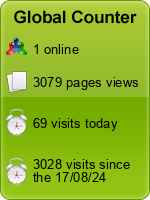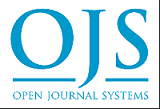The effect of health counseling on handwashing technique in early childhood settings
DOI:
https://doi.org/10.33024/minh.v7i6.480Keywords:
Handwashing, Health Education, Story-Telling MethodAbstract
Background: Preschool children generally fall within the age range of 4 to 6 years old. During this phase, youngsters demonstrate a pronounced inclination towards curiosity, develop a distinctive imagination, and maintain a strong belief in their own abilities. During this period, a notable aspect of psychosocial development is the broadening of the child's social sphere, as they start to desire companions for play and participate in routine activities beyond their home setting. Environment. Children's participation in outdoor activities can increase their vulnerability to diseases because of their inclination towards lethargy, which leads them to view handwashing as a burdensome chore. Hence, it is imperative to integrate the Story Telling Method into handwashing health education in order to foster children's comprehension that handwashing may be a pleasurable activity.
Purpose: To determine the effect of health counseling on handwashing technique in early childhood settings.
Method: A quantitative quasi-experimental, the random sample technique to choose a group of 32 pre-school children, ranging in age from 4 to 6 years, from Bengkulu City. Univariate statistical tests, specifically a paired t-test to evaluate the impact and an independent t-test to evaluate the efficacy.
Results: That the utilization of narrative-based handwashing health education is efficacious in preschool and early childhood environments. Interval of confidence at a 95% level. The handwashing ability before therapy was measured to be 1.00 with a standard deviation of 0.000, while after treatment it increased to 2.30 with a standard deviation of 0.520. The p-value of 0.000 indicates a statistically significant difference in the ability to wash hands before and after obtaining health education utilizing the story-telling method.
Conclusion: The utilization of the narrative approach in health education on handwashing can effectively alter children's perceptions, enabling them to evaluate their behaviors based on acquired knowledge.
References
Adha, N., Izza, F. N., Riyantiasis, E., Pasaribu, A. Z., & Amalia, R. (2021). Pengaruh Kebiasaan Mencuci Tangan Terhadap Kasus Diare Pada Siswa Sekolah Dasar: a Systematic Review. Jurnal Kesehatan Tambusai, 2(2), 112–119. https://doi.org/10.31004/jkt.v2i2.1842
Azmiardi, A., & Haryanti, T. (2021). Perilaku Mencuci Tangan Selama Pandemi COVID-19. Higeia Journal of Public Health Research and Development, 5(2), 245–258.
Bellinda, M. F., Rachmadi, F., & Priyono, D. (2019). Pengaruh Pendidikan Kesehatan Cuci Tangan Pakai Sabun Dengan Metode Storytelling Menggunakan Finger Puppet (Boneka Jari) Terhadap Kemampuan Mencuci Tangan Pada Anak Usia Prasekolah Di Paud Pagi Ceria Pontianak Utara. Pro Ners, 3–6.
Budury, S., Purwanti, N., & Hidaayah, N. (2023). Edukasi cuci tangan pada anak usia sekolah untuk meningkatkan kesadaran hidup bersih dan sehat. Martabe: Jurnal Pengabdian Masyarakat, 6(2), 1273–1276.
Centers for Disease Control and Prevention. (2024). Key facts of Handwashing. https://www.cdc.gov/clean-hands/data-research/facts-stats/index.html
Cevizci, S., Uludag, A., Topaloglu, N., Babaoglu, U. T., Celik, M., & Bakar, C. (2015). Developing students’ hand hygiene behaviors in a primary school from Turkey: A school-based health education study. Int J Med Sci Public Health, 4(2), 155-61.
Dahlia, L., Srinatania, D., & Perdani, A. L. (2021). Effectiveness of Storytelling Method Toward Hand Washing Knowledge and Attitude Among School Age Children in Indonesia 1. Department of Pediatric Nursing, STIKep PPNI Jawa Barat 2. Bachelor Nursing. Jurnal Ilmiah Keperawata, 8(3), 59–64.
Dewi, A., Darwis, D., & Asdar, F. (2023). Pengaruh Edukasi Cuci Tangan Terhadap Penerapan PHBS Pasca Pandemi Covid-19. Jurnal Ilmiah Mahasiswa & Penelitian Keperawatan, 3(1), 64–70.
Fadlillah, M. (2014). Desain pembelajaran PAUD (pp. 1–77).
Hermawan, S., Sutandi, P., Setiawan, A., William, S. W., & Sumarno, K. (2019). Penerapan Kebiasaan Cuci Tangan Sejak Dini Untuk Perubahan Perilaku Hidup Sehat. Jurnal LeECOM (Leverage, Engagement, Empowerment of Community), 1(2), 71–80. https://doi.org/10.37715/leecom.v1i2.1079
Hidayati, B. N., Romadhonika, F., & Salfarina, A. L. (2023). Pengaruh Storytelling (Audio Visual) terhadap Kepatuhan Mencuci Tangan pada Anak Pra Sekolah di RA Baiturrahman Rembiga Kota Mataram. Jurnal Kesehatan Qamarul Huda, 11(1), 330–334. https://doi.org/10.37824/jkqh.v11i1.2023.480
Hudju, R. F., Duyoh, L., & Masulili, F. (2022). Pengaruh Promosi Metode Cuci Tangan 6 Langkah Terhadap Kepatuhan Mencuci Tangan Anak Usia Pra Sekolah di TK Kembang Rogo Kelurahan Mamboro Barat Kecamatan Palu Utara. Jurnal Kolaboratif Sains, 5(11), 795–804. https://doi.org/10.56338/jks.v5i11.3007
Juliawan, D. G., Mirayanti, N. K. A., & Parwati, N. A. (2019). Pengaruh Pendidikan Kesehatan Dengan Bernyanyi Lagu Cuci Tangan Terhadap Tindakan Mencuci Tangan Anak Prasekolah. Journal Center of Research Publication in Midwifery and Nursing, 3(1), 11–20. https://doi.org/10.36474/caring.v3i1.124
Mandagi, A. A., Baithesda, B., & Latuminase, B. (2023). Edukasi Mencuci Tangan dengan Metode Storytelling pada Anak Usia Pra-Sekolah Di Kota Tondano, Kabupaten Minahasa. Jurnal Pengabdian Masyarakat Bangsa, 1(9), 1806–1811. https://doi.org/10.59837/jpmba.v1i9.418
Ministry of Health of the Republic of Indonesia. (2018). Hasil utama riset kesehatan dasar 2018. Kementerian Kesehatan RI. Badan Penelitian dan Pengembangan Kesehatan. Accessed from: https://kesmas.kemkes.go.id/assets/upload/dir_519d41d8cd98f00/files/Hasil-riskesdas-2018_1274.pdf
Ministry of Health of the Republic of Indonesia. (2022). Cuci Tangan Pakai Sabun Cegah Kematian Anak Akibat Infeksi. Kementerian Kesehatan RI. Accessed from: https://sehatnegeriku.kemkes.go.id/baca/rilis-media/20221017/0741275/cuci-tangan-pakai-sabun-cegah-kematian-anak-akibat-infeksi/
Ministry of Health of the Republic of Indonesia. (2024). Cuci Tangan Pakai Sabun Turunkan Kasus Penyakit Diare dan ISPA – Sehat Negeriku. Accessed from: https://sehatnegeriku.kemkes.go.id/baca/rilis-media/20211013/2938725/cuci-tangan-pakai-sabun-turunkan-kasus-penyakit-diare-dan-ispa/
Mohamed, N. A., Jamaluddin, T. Z. M. T., Zarini Ismail, M. D., Rani, M., Ramli, S., Faroque, H., & Isahak, I. (2019). Healthy Hands: Development and Evaluation of a Knowledge Transfer Program. Malaysian Journal of Medicine and Health Sciences, 15(3), 10-13.
Pratiwi, E. T., Damayanti, D. S., Anggraeni, G. S., Tanti, M. D., Winanda, T. I., Rahman, V. N., Mandagi, A. M., & Puspikawati, S. I. (2022). Pengaruh Edukasi Praktik Cuci Tangan Pakai Sabun terhadap Peningkatan Pengetahuan Anak di Masa Pandemi. Preventia : The Indonesian Journal of Public Health, 7(2), 55. https://doi.org/10.17977/um044v7i22022p55-60
Ridwanuloh, D., & Nurwulandari, M. (2022). Edukasi Cuci Tangan Hand Sanitizer Pada Anak Usia Dini Untuk Pencegahan Penularan Virus Covid-19 Di Desa Pulomulya Kecamatan Lemah Abang Kabupaten Karawang. 2448–2454.
Setiawan, P., & Sulistyorini, L. (2023). Literature Review: Hubungan Mencuci Tangan dan Konsumsi Makanan Dengan Kasus Diare Pada Anak Sekolah di Indonesia. Student Scientific Creativity Journal (SSCJ), 1(3), 286–292. https://doi.org/10.55606/sscj-amik.v1i3.1445
Suen, L. K. P., & Cheung, J. P. L. (2020). Effectiveness of “Hand Hygiene Fun Month” for kindergarten children: A pilot quasi-experimental study. International journal of environmental research and public health, 17(19), 7264.
Tadjuddin, N. (2015). BUKU Desain Pembelajaran Pendidikan anak usia dini (2015) (p. 238).
The National Population and Family Planning Board. (2023). Hari Cuci Tangan Pakai Sabun Sedunia. Pemerintah Kabupaten Bantul. Accessed from: https://kampungkb.bkkbn.go.id/kampung/37228/intervensi/665684/hari-cuci-tangan-pakai-sabun-se-dunia-hctps
Tulak, G. T., Ramadhan, S., & Musrifah, A. (2020). Edukasi Perilaku Cuci Tangan Pakai Sabun Pada Siswa Untuk Pencegahan Transmisi Penyakit. JMM (Jurnal Masyarakat Mandiri), 4(1), 37. https://doi.org/10.31764/jmm.v4i1.1702
Ummah, S., Mansur, R., & Setiawan, E. (2021). Storytelling Melalui Daring Terhadap Kemampuan Kognitif Anak Usia Dini Di Kelompok Bermain (KB) Nanda Ceria Bocek Karangploso Kabupaten Malang. Jurnal Ilmiah Pendidikan Islam Anak Usia Dini, 3(1), 23.
United Nations International Children's Emergency Fund. (2021a). State of the World’s Hand Hygiene. Before the Fall. https://data.unicef.org/resources/state-of-the-worlds-hand-hygiene/
United Nations International Children's Emergency Fund. (2021b). Working paper: Mapping and gap analysis of tools designed to collect data on hand hygiene in public spaces. In Who/Unicef Jmp (Issue June).
World Health Organization. (2022). Hand hygiene. https://www.who.int/teams/integrated-health-services/infection-prevention-control/hand-hygiene#:~:text=Available evidence shows that compliance, (64.5%25 vs 9.1%25).
World Health Organization. (2024). Proportion of Population Using a Hand-Washing Facility with Soap and Water. WHO. Accessed from: https://data.who.int/indicators/i/21B89A9/D1223E8
Wulandari, R. Y. (2021). Literatur Review Analisis Hubungan Perilaku Cuci Tangan Pakai Sabun dengan Kejadian Diare pada Anak Sekolah. Borneo Student Research, 3(1), 589–597.
Downloads
Published
How to Cite
Issue
Section
License
Copyright (c) 2024 Malahayati International Journal of Nursing and Health Science

This work is licensed under a Creative Commons Attribution-ShareAlike 4.0 International License.









